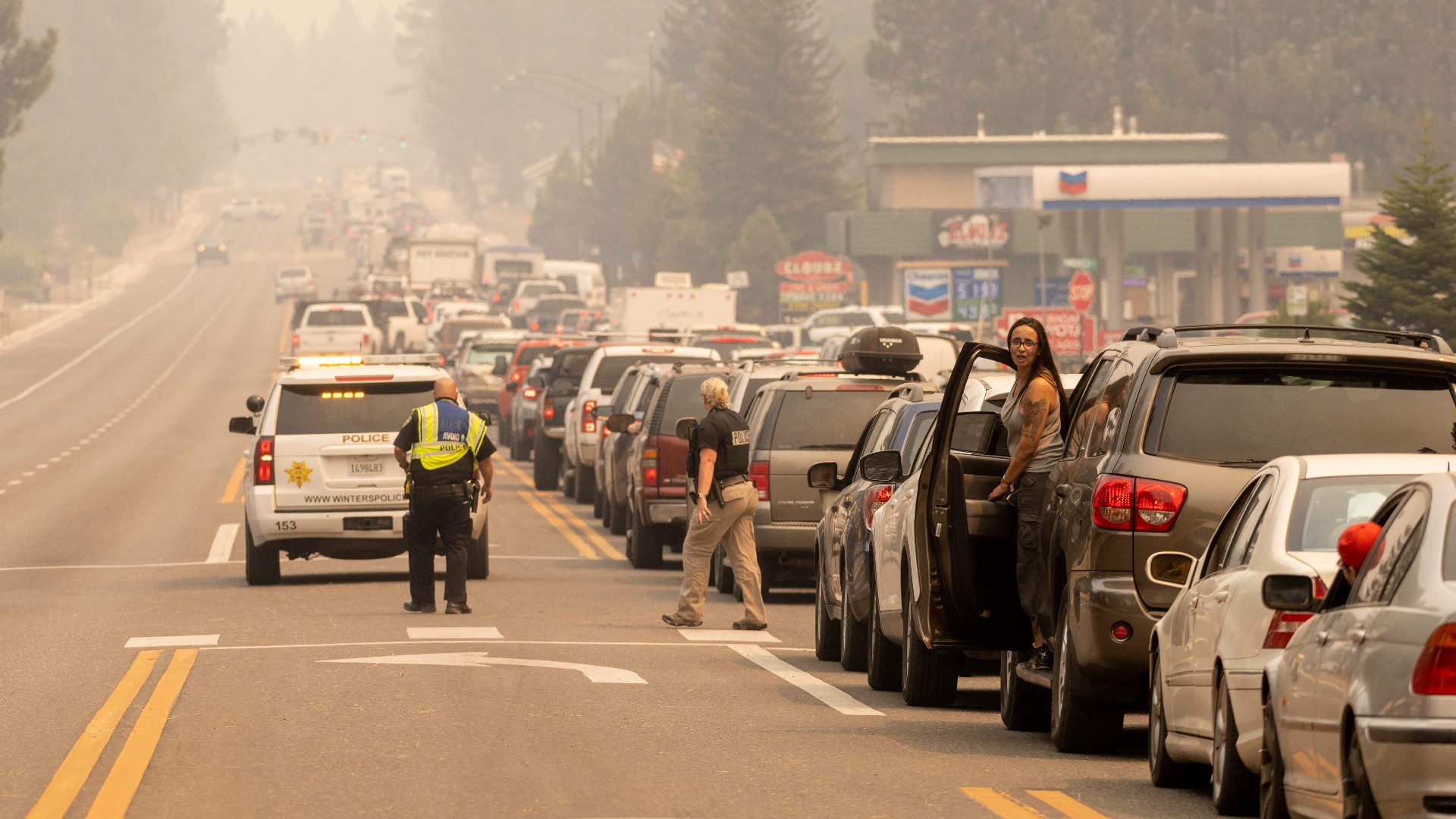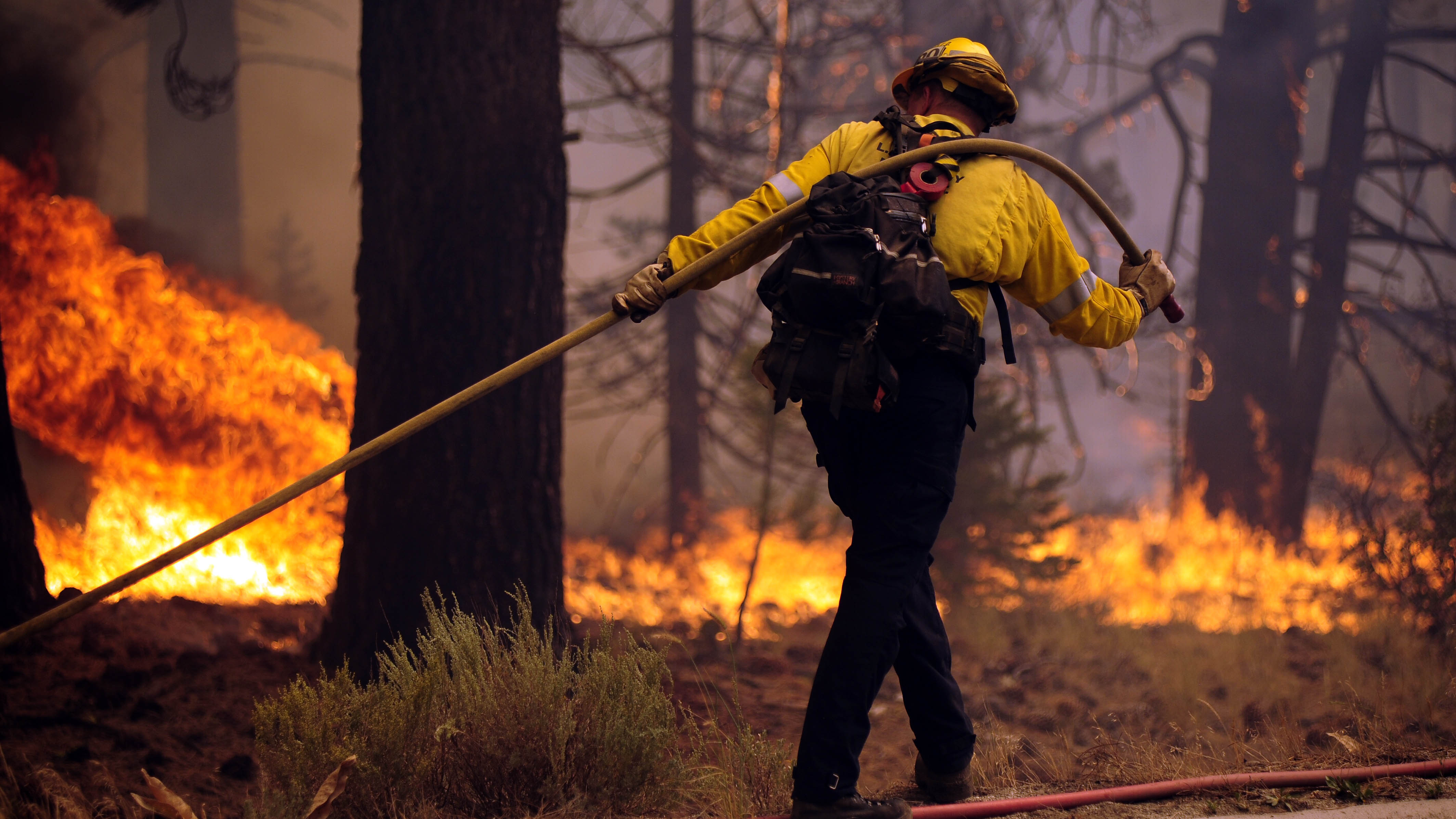What to Know
- The Caldor Fire in El Dorado and Amador counties has burned nearly 214,107 acres and is 37% contained
- The blaze has destroyed at least 892 structures and damaged another 72
- Nearly 32,000 structures remain threatened
Better weather has slowed the growth of the huge California wildfire near Lake Tahoe resort communities, authorities said Friday.
The Caldor Fire remained only a few miles from the city of South Lake Tahoe, which was emptied of 22,000 residents days ago, along with casinos and shops across the state line in Nevada, but no significant fire activity occurred since Thursday , officials said.
Tim Ernst, an operations section chief, said fire officials were cautiously optimistic thanks to “a lot of hard work” by firefighters over the past two weeks.
Get a weekly recap of the latest San Francisco Bay Area housing news. Sign up for NBC Bay Area’s Housing Deconstructed newsletter.
The nearly 333-square-mile fire was not making any significant advances and was not challenging containment lines in long sections of its perimeter, but Ernst said “the risk is still out there” with some areas that remained hot.
Crews were restoring utility services, knocking down hazardous trees and putting out smoldering hot spots to prepare certain areas for repopulation, but the timeline for allowing residents back to their home remains unclear, said Capt. Parker Wilbourn, a spokesman for the California Department of Forestry and Fire Protection.
“At this point, we don’t know. We’re doing everything we can to mop up the fire and clean up areas that need to be cleaned up,” Wilbourn said.
Caldor Fire maps
- Evacuation map: see where evacuation orders and warnings are in effect
- Burn map: see where the fire has burned and where hotspots are
- Structure status map: check on the status of structures in the burn zone
The fire had been driven northeast on a course leading to South Lake Tahoe for days by southwestern winds, but that pattern ended this week. Calmer winds and increased humidity Thursday and Friday helped crews increase containment of the blaze to 37%.
“Very positive trends with regards to weather,” said Dean Gould, a U.S. Forest Service administrator. “That’s huge for us. Let’s take full advantage of it while we have this window.”
With the fire growing at the smallest rate in two weeks, he said, “Things are clearly heading in the right direction for us.”
Amid the positive outlook, incident meteorologist Jim Dudley warned that the air mass in the Sierra Nevada drains downslope every night and then sloshes upslope during the day and that the region’s terrain of ridges and deep canyons can create winds that go in “squirrely directions.”
“Just because we don’t have red flag wind conditions across the fire, the wind threat is still there and it’s all localized,” he warned.
The fire — which began Aug. 14, was named after the road where it started and raged through densely forested, craggy areas — was still considered a threat to more than 30,000 homes, businesses and other buildings ranging from cabins to ski resorts.
Residents who were forced to flee South Lake Tahoe earlier this week remained evacuated along with people across the state line in Douglas County, Nevada.
The resort area can easily accommodate 100,000 people on a busy weekend but was eerily empty just before the Labor Day weekend.
The wildfire dealt a major blow to an economy that heavily depends on tourism and was starting to rebound this summer from pandemic shutdowns.
“It’s a big hit for our local businesses and the workers who rely on a steady income to pay rent and put food on their table,” said Devin Middlebrook, mayor pro-tem of South Lake Tahoe.
He said the shutdown will also hurt the city, as it gets most of its revenue to pay for police and fire services, as well as road maintenance, from hotel taxes and sales taxes.
Friday’s forecast called for lighter winds but also extremely dry daytime weather, with a warming trend through the weekend as high pressure builds over the West, fire officials said.
More than 15,000 firefighters were battling dozens of California blazes that have destroyed at least 1,500 homes. One blaze, the Dixie Fire, was about 65 miles north of the Caldor Fire. It is the second-largest wildfire in state history at about 1,350 square miles and is 55% contained.
California has experienced increasingly larger and deadlier wildfires in recent years as climate change has made the West much warmer and drier over the past 30 years. Scientists have said weather will continue to be more extreme and wildfires more frequent, destructive and unpredictable. No deaths have been reported so far this fire season.
Nguyen reported from San Francisco. Associated Press writer John Antczak in Los Angeles contributed to this report.



